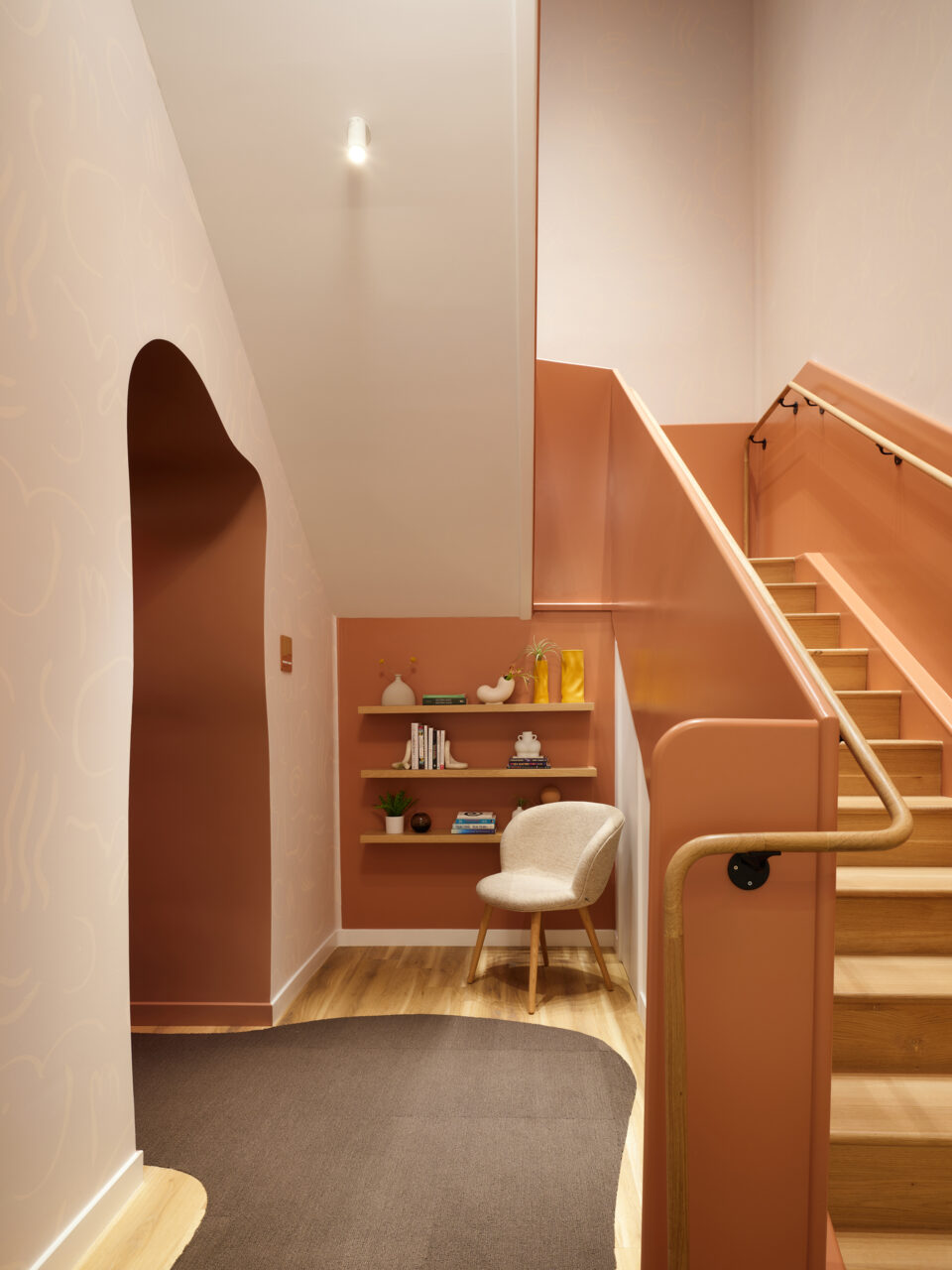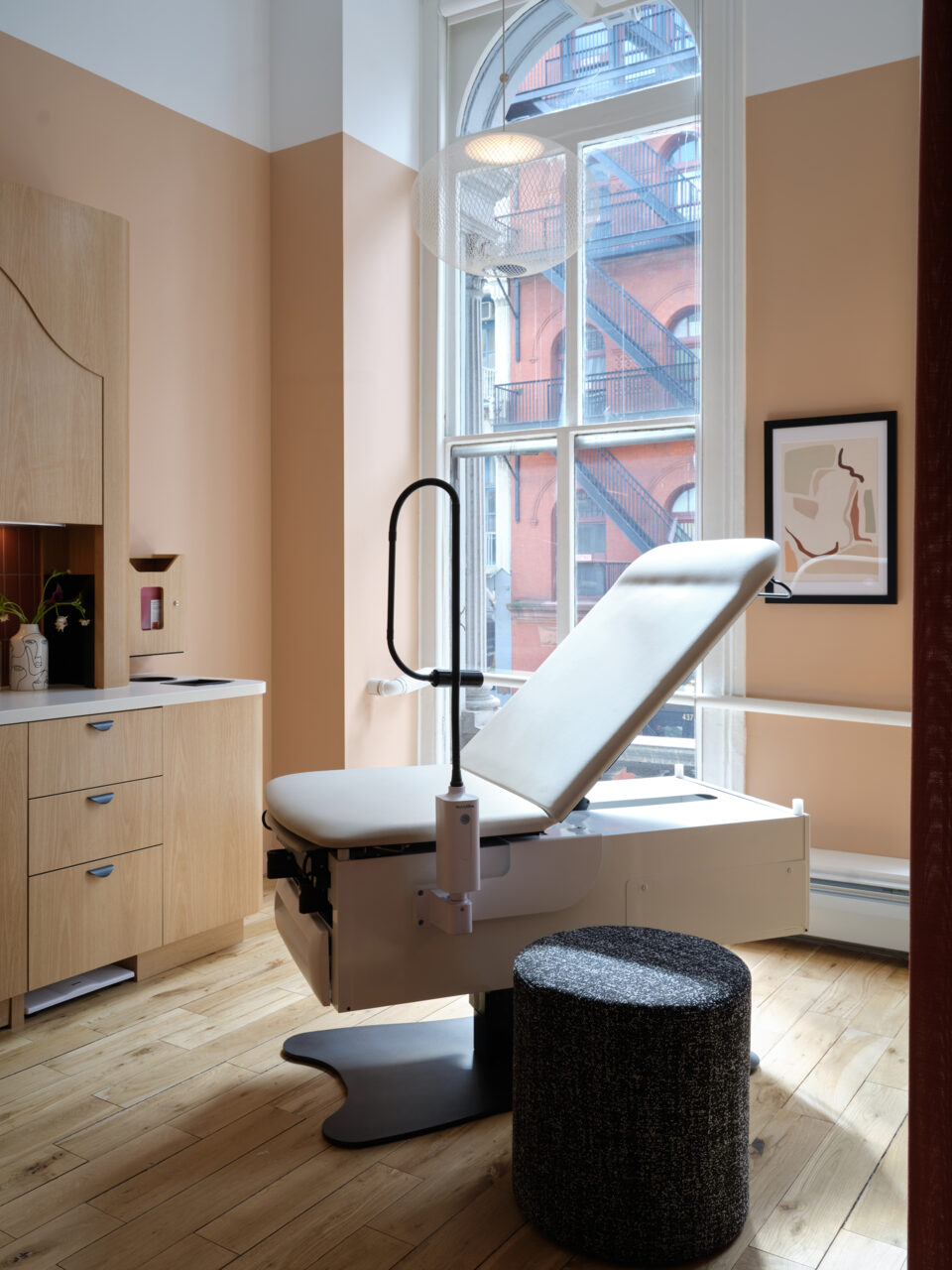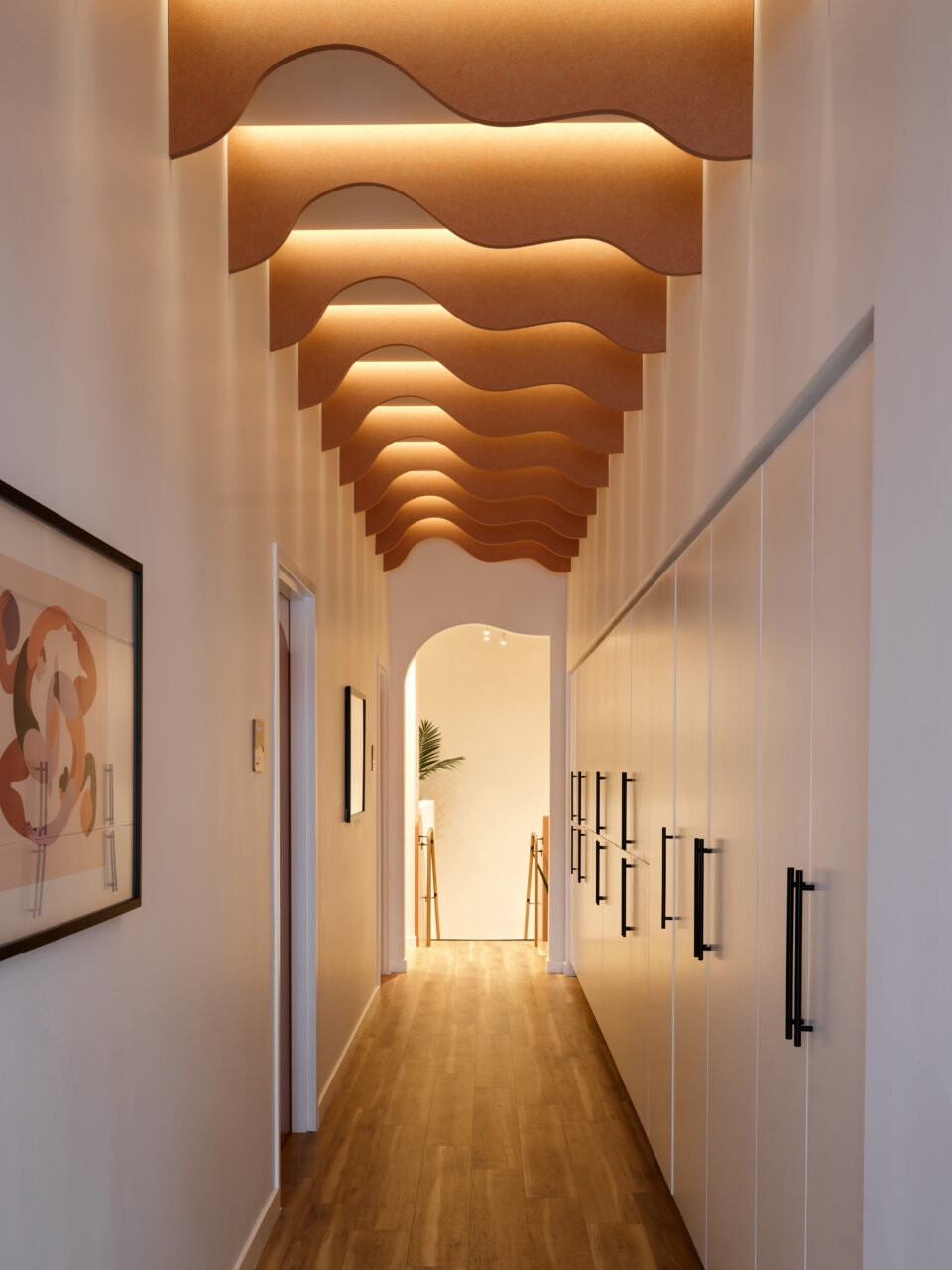A trip to the doctor’s office often summons a waiting room cluttered with chairs, a reception desk screened off by a Plexiglas sheet, over-lit exam rooms, and vinyl surfaces galore. Using its experience designing retail and hospitality spaces, Alda Ly Architecture (ALA), an architecture and interior design practice in New York, has done away with this trope: It designs clinics that are hospitable, not hospital. The firm recently completed two interiors in Soho and Williamsburg for Tia, a health center providing gynecology, primary care, mental health, and wellness services for women and women-identifying individuals.
ALA began working with Tia in 2021, and the firm had previously designed several locations in California and a clinic in Phoenix. In short order since the office was founded in 2017, ALA has built up a considerable healthcare portfolio; its first project in this typology was for Parsley Health, a holistic medicine clinic in New York.
Founder and Principal Alda Ly told AN: “It was a huge learning curve for us to think through what do the providers need? What are the staff needs? How the patients feel, of course, we can relate to that and put ourselves in those patients’ shoes, but how do you make it less stressful, less scary, more calming, inviting, more welcoming?”
These latest New York projects were particularly meaningful for ALA. Unlike past Tia projects, the office had the opportunity to provide all the design services the firm offers.
Marissa Feddema, architect and director at ALA, added: “The New York projects are special for us because we’re local. We’re licensed here in New York, so we got to take it from beginning to end. We designed the projects like we typically do, but we also got to be the architect of record, oversee the permitting phases, construction, and all the FFE procurement and installation. And now they are spaces in the neighborhoods we live in.”
Tia Williamsburg occupies two levels of a brick-clad residential building, giving it a retail presence. A curving staircase with wood steps and railings that connect the floors is a focal point of the design.
Instead of working with a blank slate, ALA, was required, as with the Brooklyn project, to devise a different approach for the Soho location because the office is on the second floor of an old loft building. Historical details such as arched windows and fluted columns were not to be ignored. The windows run along the perimeter, so ALA decided to locate the exam rooms here, adding curtains for privacy.
Both locations pull from the brand identity of Tia, which features skin tones and curved, body-inspired forms. Furnishings, cabinetry, and paint feature beige shades and clay-influenced colors. Architectural elements, including the reception desk, stairs, and doorways, take on curved shapes.
While services across Tia locations are relatively universal, with clinic appointments, wellness classes, and coaching, the classroom spaces cater to the local community. In New York they are primarily used for mental health.
ALA’s experience designing retail and hospitality projects is evident in the small details, including wardrobes in exam rooms where patients can store their belongings, shelving for displaying products, and staff lounges imbued with a residential flair.
“With all of these projects, what we tried to do is learn from healthcare spaces in the past and carry in that knowledge to make sure the spaces still function but ask questions to see where we could think of new ways to bring in new materials and ideas,” Feddema shared.
In swapping out vinyl surfaces for stone counters, replacing harsh overhead lighting with small fixtures secured to exam beds, and decorating with warm tones and attractive furnishings, ALA has made some medical visits less intimidating and more inviting.






